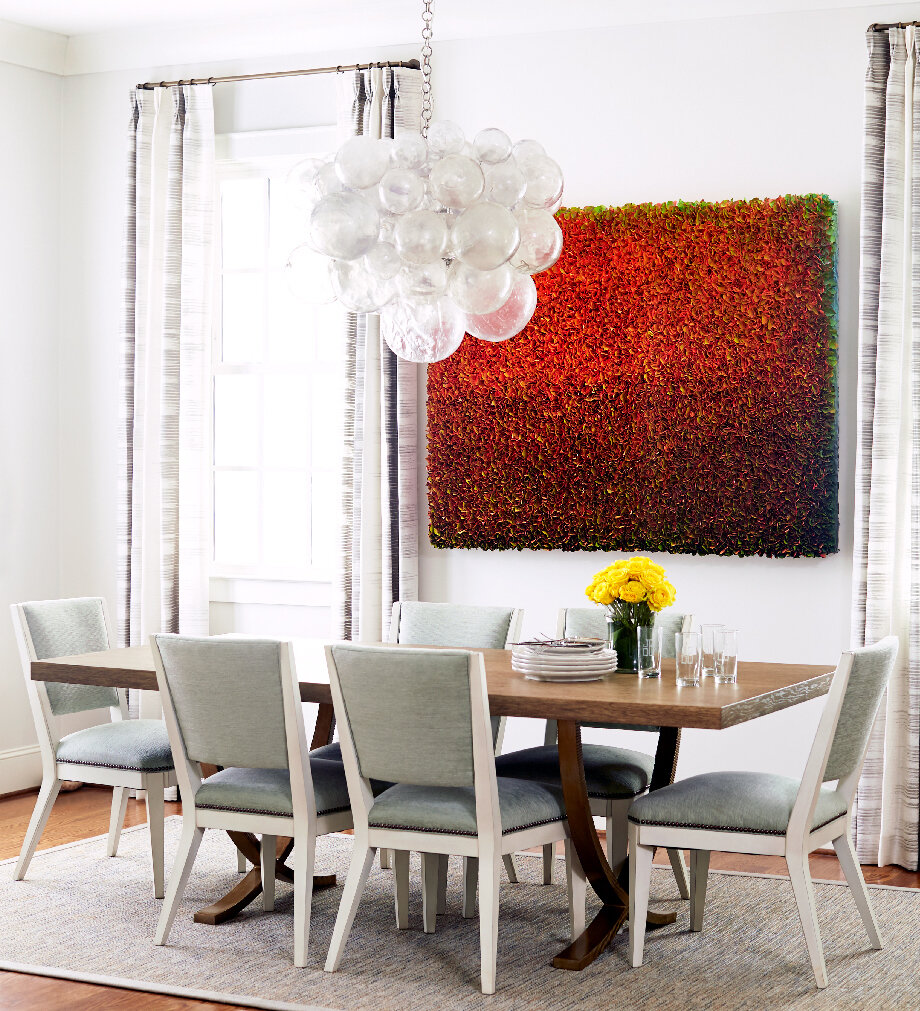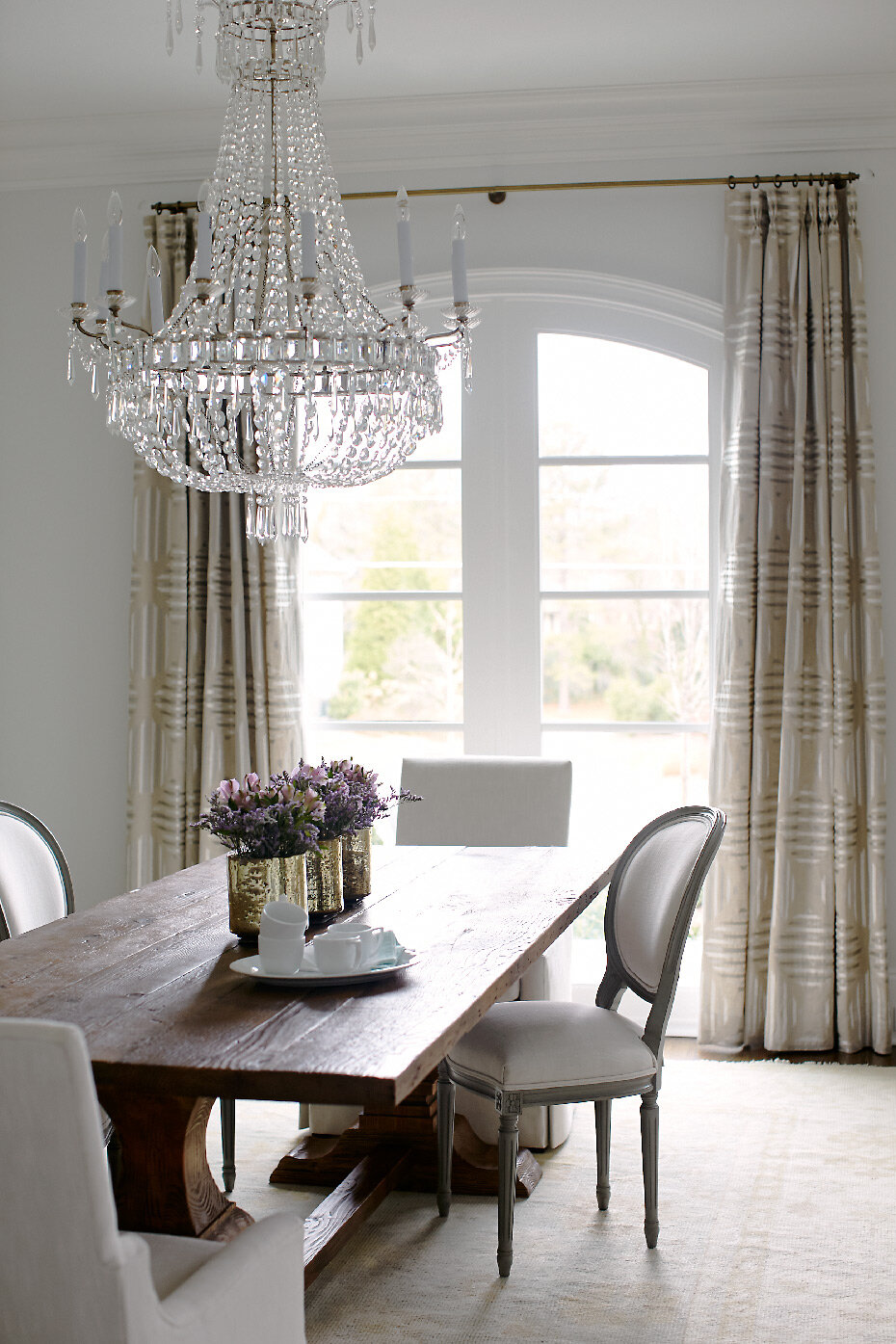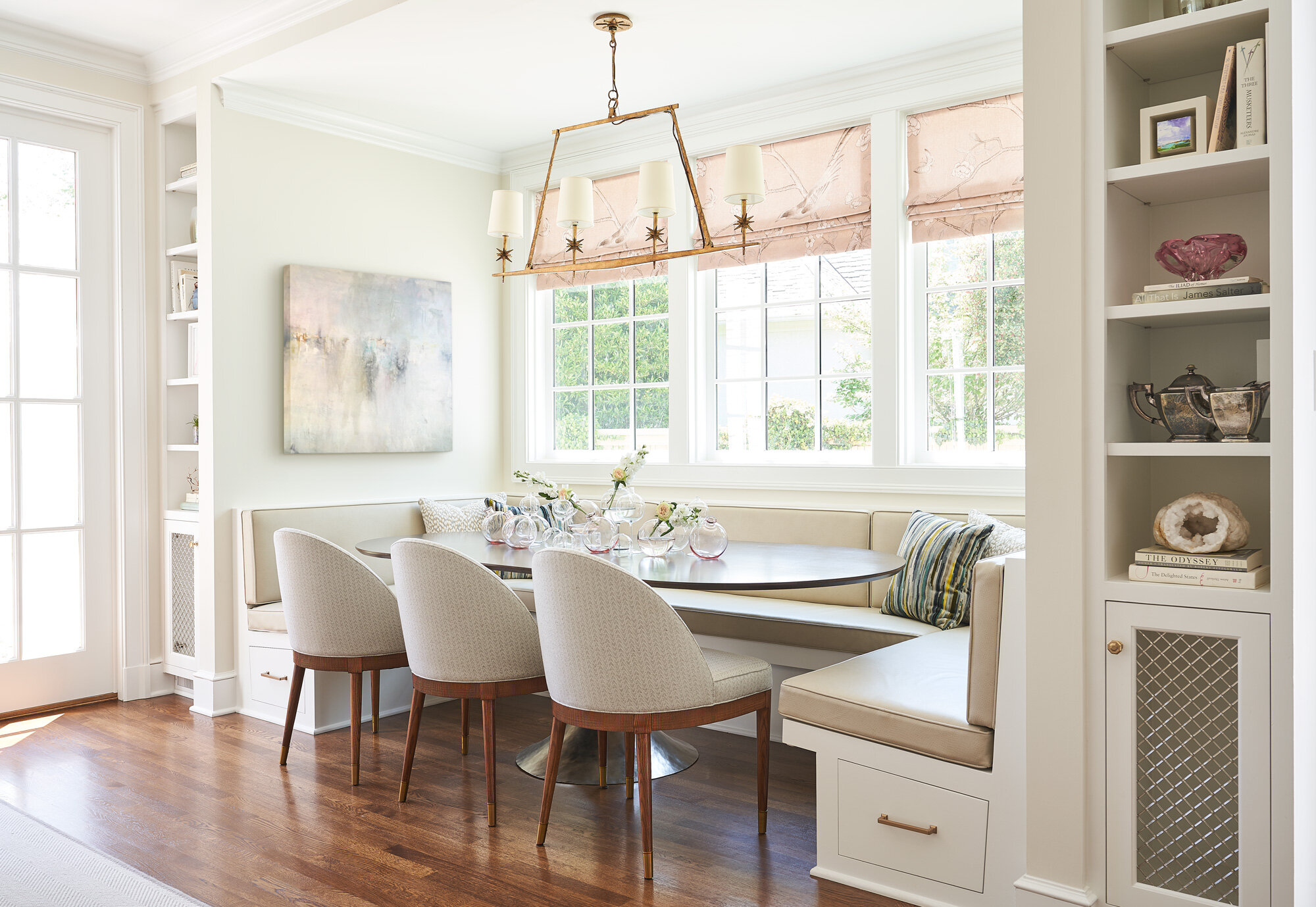Which Table Shape Is Right for You?
Kara Cox Interiors
Designers are like doctors - we have a lot of friends, family, and acquaintances who want to ask our advice. One of the top questions I get is what dining table shape to select, but I never have a simple answer. The shape of your table depends on the size of the room it will be in and how you and your family will use it. Here are 4 of the most common shapes and how to know which is the right one for you!
Kara Cox Interiors
Rectangle
This is the most common shape for dining tables. It fits the majority of dining rooms and it will seat a lot of people, especially if you use leaves in the table. I suggest these for clients with large families, or those who love to entertain. And with the way we’re living today, this shape also gives you plenty of room to spread out with homework projects and video calls.
Kara Cox Interiors
Round
A round table is fantastic in a large or square room. It’s one of my favorite shapes because everyone seated at the table can easily see the others. It’s a more intimate dining experience, even if there are 8 or more at the table. And it’s easy to squeeze in one more guest when needed because there aren’t any corners to contend with. Look for a round table with leaves if you have a small family. That way you can adjust for guests, but have a smaller footprint when it’s just the family.
Kara Cox Interiors
Oval
This shape used to be very popular in the ‘50s and ‘60s, and it’s one that I love to use. It works especially well with a banquette, like in the home I designed above. Like a rectangle, it can seat a lot of family and friends, but it doesn’t have any pesky corners to run into as you slide in and out of the banquette. This shapes is also great in a longer dining room, or one where you need that extra space that the curves give you.
Kara Cox Interiors
Square
A square table is a great shape to use in smaller spaces, like a small dining room, one section of an open-plan room, or in a kitchen nook. In the room above, I selected a square table because this family loves to play board games, so it can be used as a game table or as an intimate dining table.
Kara Cox Interiors
No matter which shape you use, remember that a good rule of thumb is to leave about 36 inches from the table’s edge to the wall or other furniture nearby. That gives you enough room for the chair and for the seated person to get up from the table without hitting anything nearby.
Use these tips to help you with your dining room, and remember that, like a doctor, my team and I do make house calls!
All the best,
Kara






